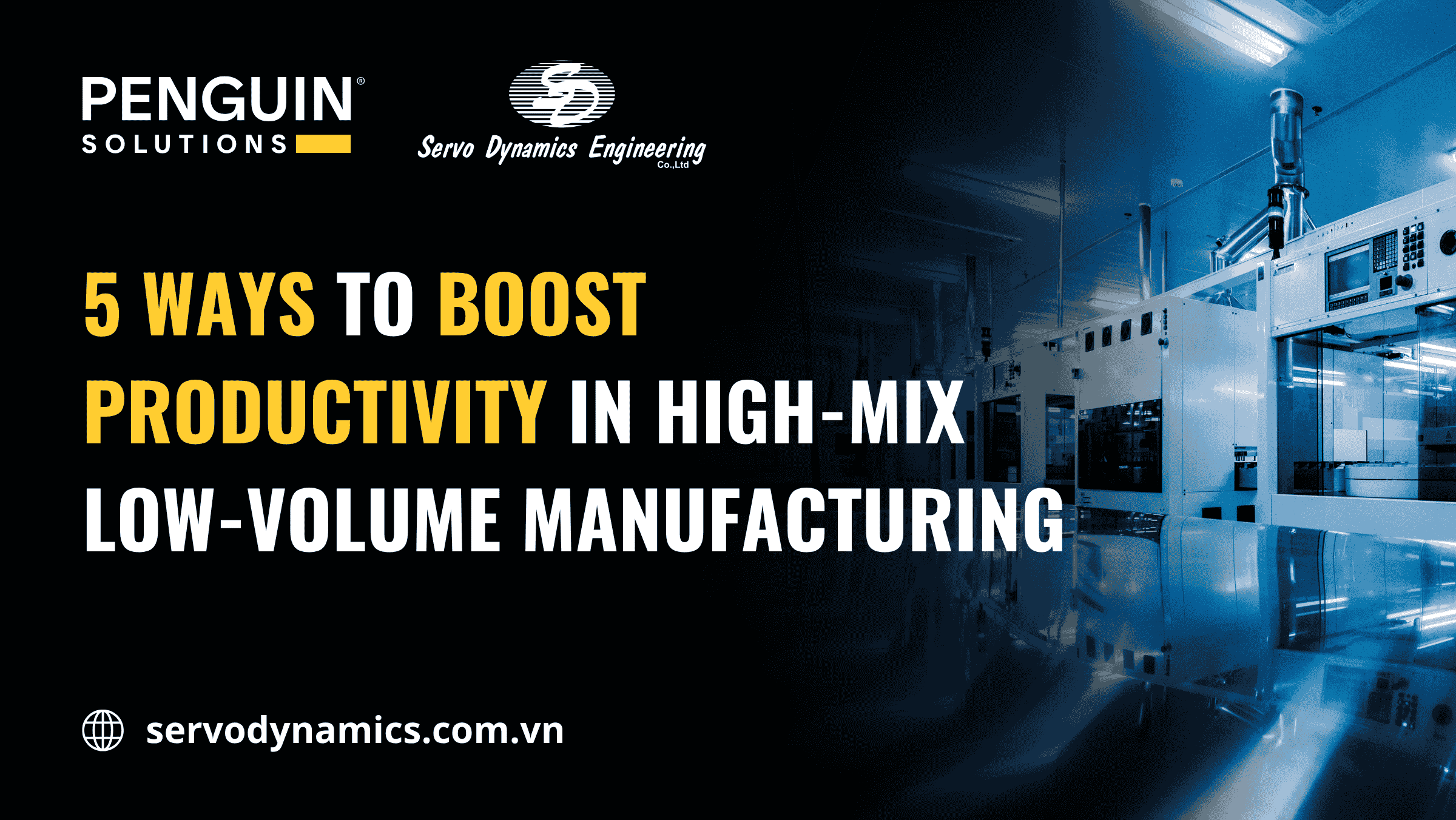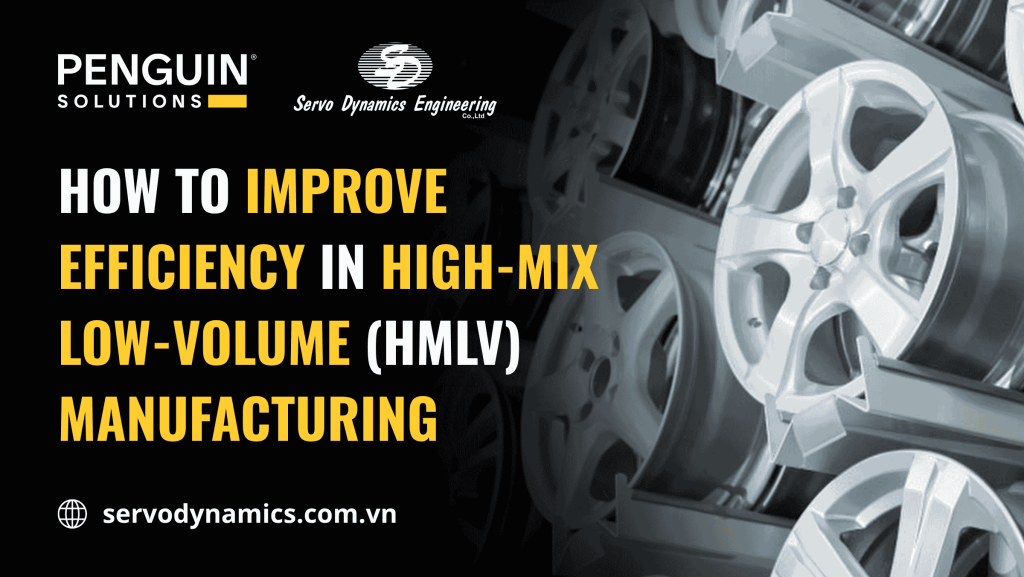Consulting
HOW TO IMPROVE EFFICIENCY IN HIGH-MIX LOW-VOLUME (HMLV) MANUFACTURING
Discover the growing trend of high-mix low-volume (HMLV) production, including its pros, cons, and smart strategies to boost productivity and profitability in your factory.
In today’s fast-changing market, manufacturers are under pressure to produce a wide variety of products in smaller quantities. This shift has made High-mix Low-volume (HMLV) manufacturing more relevant than ever. But how can you ensure profitability with such a complex production model? In this article, we explore the benefits, challenges, and practical ways to increase efficiency in HMLV manufacturing.
What is High-mix Low-volume (HMLV) manufacturing?
HMLV manufacturing means producing many different product types in small batches. Orders often come with specific customer requirements, so this approach is highly flexible and responsive to market changes.
What defines High-Mix Low-Volume (HMLV) production? Let’s look at its unique features and why many companies are switching to this method.
1. Flexible production to meet market demands
High-mix low volume (HMLV) is a popular manufacturing method in the fabrication industry, categorized by “what is produced and how much.” In this method, a company or factory produces many different product types, but each type is in small quantities. The quantity and product types are often decided by customer orders, making it a highly flexible production method that adapts quickly to user needs.
2. Reasons and context for the rise of diverse, small-quantity production
During times of rapid economic growth, the main trend was mass-producing a few similar products. High-quality production methods offered long-lifespan products to the market, which were improved based on customer requests. The production philosophy then was: “We want customers to use the same product or products within the same line for a long time.”
However, in recent years, customer demands have changed very quickly, and new needs often pop up before a product reaches the end of its life cycle, leading to shorter product cycles. Also, technology advancements have allowed for many different functions, encouraging diversity, and it’s now rare for many people to use the same product.
This way, shorter product cycles, and diversified demands have led to smaller segments of best-selling products, and we’ve entered an era where producing small quantities of many product types is normal.
Advantages of High-mix Low-volume (HMLV) Manufacturing
High-Mix Low-Volume (HMLV) production brings these advantages:
- Targets the Right Customers: It can meet needs that a single product type couldn’t before. This allows you to identify your target customers for production and supply, helping to forecast demand more accurately.
- Creates Unique Products: By diversifying product lines to meet customer demands and innovating to create better products, the potential for innovation increases. This buildup of innovation leads to the creation of unique products no other company has.
- Reduces Inventory: By producing only what’s needed in the right quantity to meet demand, inventory risks are minimized. Less inventory means less storage space and management costs, as well as fewer losses from unsold goods.
- Spreads Risk When Products Sell Well: Even if one product type stops selling, you can avoid a big drop in sales by increasing production of the product that is selling well at that time since you have many product types to produce. This also helps spread the risk compared to having only a few product types.
Challenges of High-mix Low-volume (HMLV) production
While there are benefits to producing many product types in small quantities, there are also challenges:
- Reduced Production Efficiency: Producing many different product types in one place means more time is needed to switch and set up production lines. This lowers the operating rate in terms of actual production time. Also, since more people are usually needed for setup than when the line is running, production efficiency per person, including production support staff, will continue to drop.
- Reliance on Production Management Capability: In High-mix Low-volume production, which is mainly made-to-order, adjusting production plans needs tight control to constantly switch between different production models while meeting delivery deadlines. This relies heavily on production management skills, not just for scheduling production lines but also for ordering materials and arranging shipping.
- Worker Training: In High-mix Low-volume production, different products are made almost every day. Workers and quality inspectors at each step must learn the work procedures for many different products. Also, work procedure guidelines and quality control standards need to match this. Training workers is also a challenge in High-mix Low-volume production.
- Increased Equipment Costs: In High-mix Low-volume production, you’re expected to make completely different products with few similarities. In such cases, tools and equipment used for one product type might not work for another, and new tools and equipment might be needed. If equipment costs rise too much, there’s a risk of not making a profit even if you always produce best-selling products.
- Increased Management Resources Needed: As the number of product types produced goes up, so does the amount of management resources needed, like people, materials, money, information, and time. You need to find ways to optimize the use of these management resources.

How to boost productivity in High-mix Low-volume manufacturing
While the benefits of HMLV production are clear in terms of customer demand, the drawbacks are clear in terms of costs. So, what efforts should be made to boost productivity in High-Mix Low-Volume (HMLV) production?
To do this, it’s important to make good use of HMLV production’s advantages while minimizing its drawbacks.
1. Break down order frequencies and change your approach
To lessen the downsides of diverse, small-quantity production, flexible production management is key. Specifically, this means breaking down order frequencies and the batch size of each order into multiple stages and deciding how to handle each stage.
If orders are received often for one product type, it’s efficient to consider setting up a dedicated, fixed line for that product type and reducing setup time to improve production efficiency. On the other hand, if orders are received infrequently, handling the situation through made-to-order production is more efficient.
2. Sometimes, having inventory is good
When order frequency is especially short and frequent, you need to reduce setup costs by keeping inventory. In principle, one of the benefits of HMLV production is reduced inventory, but if setup costs increase in exchange for no inventory, it can backfire. For this reason, there are cases where the overall optimal solution is to determine the right inventory level and keep a certain amount of stock.
3. Continuously improve and optimize processes
In HMLV production, the biggest reason for increased costs is setup frequency. From this angle, it’s clear that improving setup efficiency directly relates to production efficiency.
Specifically, there are methods to improve “internal setup” (done by stopping machines and operations) and “external setup” (done outside the production line while production continues). It’s important to continuously improve to make setups more efficient, such as improving the distribution of internal and external setups, making internal setups more efficient, and eliminating waste through work analysis.
4. Implement systems to boost efficiency
In HMLV production, careful and appropriate inventory management and process management are very important. Therefore, it’s likely that the situation can be improved by introducing an inventory management system or a production management system. This is because the entire process, from ordering materials and raw goods to collecting finished products, will become smoother and more efficient.
To do this, you need to carefully consider current issues and the impact of introducing a system, then choose the necessary system that fits your company’s operations.
5. Information and communication technology (ICT) solutions for production efficiency
As High-Mix Low-Volume (HMLV) production grows and more efficient production methods are needed, improvements have been made to manage production through on-site setup improvements and system introduction. However, alongside these, newer efficient methods are gaining attention.
These solutions using IoT and AI have been introduced in many production sites and are attracting attention even where they haven’t been introduced yet.
For example, human errors are likely to occur due to insufficient worker training in HMLV production. To solve this, there are cases where an error prevention system combining projection mapping and image sensors has successfully shortened training time and reduced the defect rate.
Also, a case where AI was trained to learn defect product evaluation rules and external inspection efficiency improved is a good example of using ICT, to achieve both inspection accuracy improvement and automation. In improving management systems, there are cases where production efficiency is increased through optimal processes by using AI-integrated process management systems.
In the future, as High-Mix Low-Volume (HMLV) production is expected to continue growing, such ICT solutions will likely soon become essential.
The future of High-mix Low-volume (HMLV) Manufacturing
We’ve learned about the reasons for the rise of diverse, small-quantity production, its pros and cons, and future countermeasures.
As society develops and demands become more diverse, diverse, small-quantity production is expected to continue growing. If we don’t keep working to improve productivity at this point, it might be hard to ensure profits due to increased setup times and equipment costs. To adapt to a society of diverse, small-quantity production, it might be necessary to consider new countermeasures that factor in the use of AI and IoT.

 Tiếng Việt
Tiếng Việt



